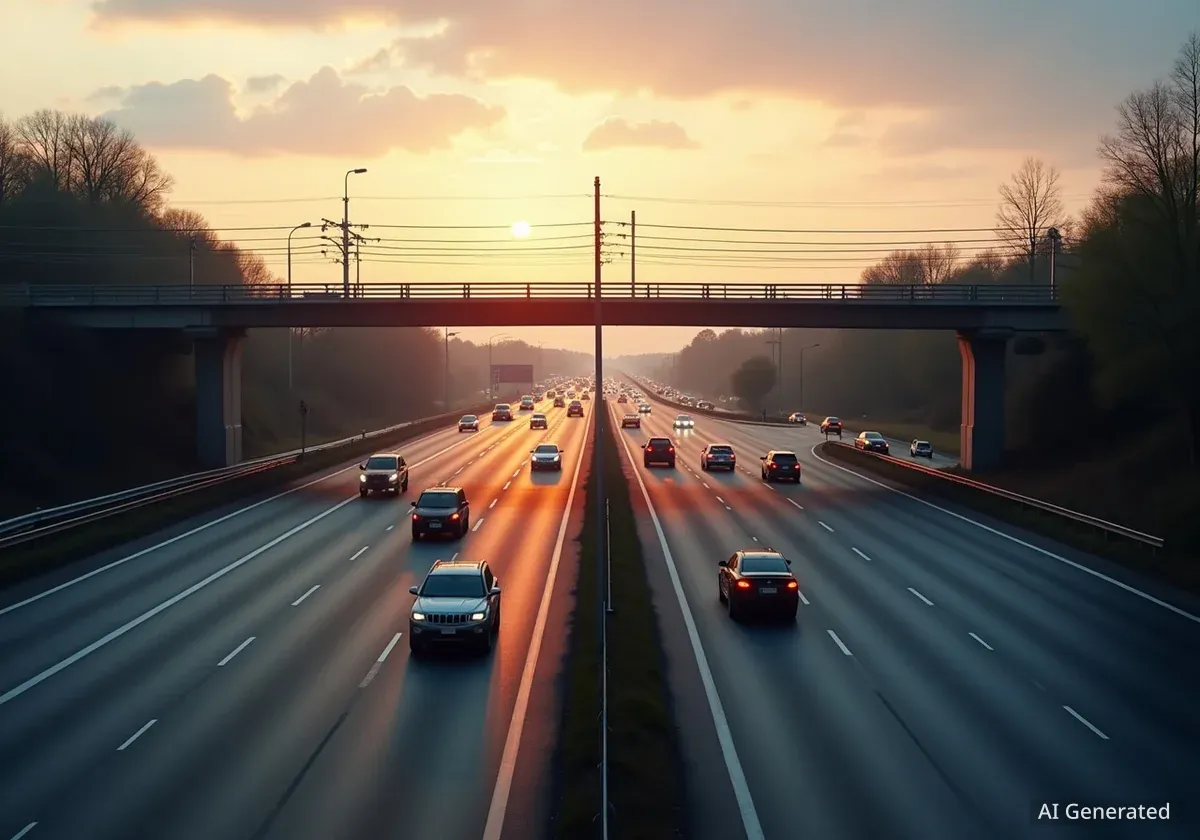Atlanta's Interstate 75/85 Downtown Connector is undergoing a significant repaving project. This work is expected to cause traffic delays for commuters in and around the city's central areas. Drivers should plan for lane closures and consider alternative routes to minimize travel time.
Key Takeaways
- Major repaving on I-75/85 Downtown Connector
- Lane closures expected between 17th Street and University Avenue
- Work primarily occurs overnight from 8 p.m. to 5 a.m.
- Alternative routes include Highway 41, Northside Drive, and I-285
Understanding the Repaving Schedule
The repaving operation on the Downtown Connector started on Monday evening. Crews are scheduled to work through the night until Tuesday morning. Specifically, the lane closures are anticipated to begin after 8 p.m. and conclude by 5 a.m. the following day. This pattern is likely to continue for the duration of the project, focusing on overnight hours to reduce impact during peak traffic times.
The scope of the work covers both northbound and southbound lanes of the I-75/85 corridor. This critical stretch of highway connects various parts of Atlanta and is known for its high traffic volume. Commuters who regularly use this route should remain aware of the ongoing construction activities.
"Watch out for crews to be actively working, especially in the northbound lanes as you leave North Avenue trying to work your way up the 17th Street," stated Mike Shields of Triple Team Traffic.
Traffic Fact
The I-75/85 Downtown Connector is one of the busiest highway segments in the state of Georgia, handling hundreds of thousands of vehicles daily. Its maintenance is crucial for regional mobility.
Impacted Areas and Lane Closures
The repaving effort focuses on a specific segment of the Downtown Connector. This area extends from 17th Street in Midtown down to University Avenue, near the southern edge of downtown Atlanta. Drivers traveling through this zone should expect reduced lane availability.
The active work zones will primarily affect the northbound lanes, particularly around the North Avenue exit heading toward 17th Street. However, southbound lanes will also experience closures at various points within the project's limits. These closures are temporary and are implemented for the safety of both construction workers and motorists.
The repaving project aims to improve the road surface, which can enhance safety and ride quality for drivers. While inconvenient in the short term, these infrastructure upgrades are necessary for long-term road integrity.
Recommended Alternative Routes
To help drivers avoid significant delays, traffic experts recommend several alternative routes. These options can help commuters navigate around the primary construction zones on the Downtown Connector. Planning ahead is key to a smoother journey during this period.
Midtown and Downtown Alternatives
- Highway 41 (Northside Drive): This route offers an alternative for those traveling into or out of Midtown and Downtown. It runs parallel to the Connector in many areas.
- Peachtree Street: For travel specifically out of Midtown, Peachtree Street remains a viable option. It provides a direct path through the heart of the city, bypassing the interstate.
Southern Alternatives near the Airport
- University Avenue: Located closer to Hartsfield-Jackson Atlanta International Airport, University Avenue can be used by drivers needing to bypass the southern end of the Connector.
- Metropolitan Parkway: This road is essentially a continuation of University Avenue, changing names as it progresses. It serves a similar purpose for localized travel away from the interstate.
Background on Atlanta Traffic
Atlanta is known for its extensive highway system and significant traffic congestion. Major infrastructure projects, like this repaving, are common as the city's population and vehicular traffic continue to grow. These projects are essential for maintaining the city's transportation network.
Utilizing the Atlanta Bypass
For drivers looking to avoid the central Atlanta area entirely, Interstate 285, often referred to as Atlanta's bypass, is a strategic option. This orbital highway circles the city, allowing motorists to travel around the core downtown and midtown areas where the repaving is occurring.
Using I-285 can be particularly effective for longer-distance travel or for those who do not need to access destinations directly within the downtown or midtown districts. While I-285 can also experience congestion, it typically offers a way to circumvent major downtown construction.
Commuters should check real-time traffic updates before starting their journey. This will provide the most current information on lane closures, delays, and the most efficient routes available at any given time.
Did You Know?
The Downtown Connector is a concurrency of I-75 and I-85. This means both interstates share the same roadway through the city center, making it a critical choke point for regional traffic flow.
Ongoing roadwork is a common aspect of urban infrastructure maintenance. While it can cause temporary disruptions, these projects are vital for ensuring the safety and efficiency of major roadways. Drivers are encouraged to exercise caution in work zones and adhere to posted speed limits.





